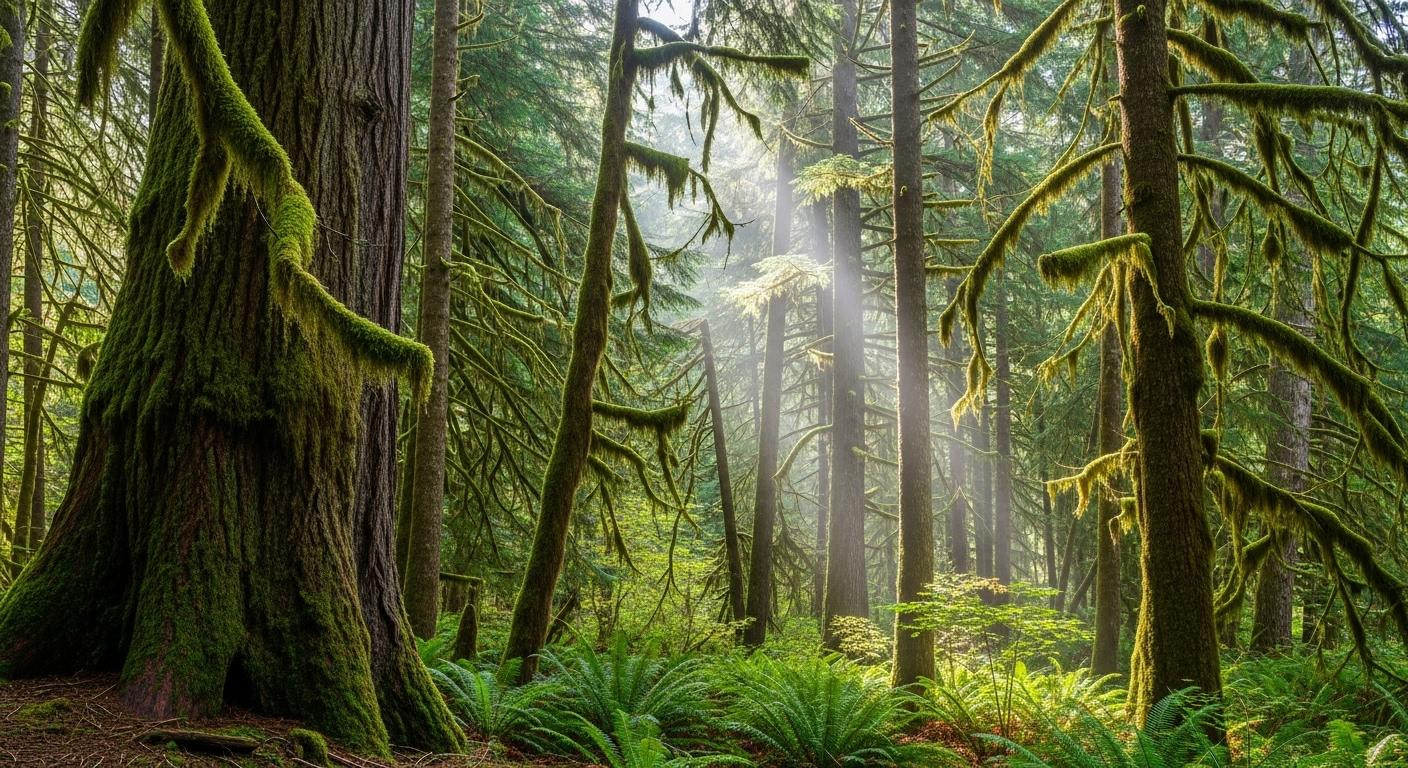Dawn breaks at 6:47 AM in Gwaii Haanas National Park. Mist curls through moss-draped Sitka spruce while ancient cedars stand silent. Three days ago, you carried urban anxiety and scrolling habits. Now, something fundamental has shifted. Not through wellness workshops, but through the archipelago’s 13,000-year rhythm that makes time feel different. This is the Haida Gwaii transformation that 30,000 annual visitors discover while 4 million tourists crowd Yellowstone’s boardwalks.
Where ancient forests hold 13,000 years of silence
Haida Gwaii spreads across 150 islands 50 miles off British Columbia’s coast. The archipelago stretches 155 miles north to south with only 93 miles of roads. Access requires a 1.5-hour flight from Vancouver ($400-$600 roundtrip) or a 6-hour ferry from Prince Rupert.
October 2025 weather ranges 46-57°F with brilliant autumn colors. Shoulder season brings 25% lower costs and profound solitude. The arrival moment reveals isolation isn’t emptiness. It’s presence.
Tourism evolved from natural exploration to cultural heritage over two decades. Indigenous voices shaped sustainable tourism. Oregon’s forest experiences offer similar Pacific Northwest transformation potential.
What happens when culture isn’t preserved but living
The Haida Heritage Centre at Kaay Llnagaay presents living narrative, not static exhibits. Haida formline art tells active stories through carved totems and argillite jewelry.
Totem poles that still tell active stories
Carvers practice ancestral techniques daily in cedar workshops. Hand-carved totem poles feature iconic designs recognized worldwide. The contrast with museum exhibits becomes clear: culture breathes here.
13,000 years of continuous presence
Archaeological evidence confirms unbroken Haida habitation predating Egyptian pyramids. UNESCO World Heritage Gwaii Haanas designation combines natural and cultural preservation. The weight of standing where indigenous stewardship spans millennia hits visitors quietly.
The three-day transformation visitors never expect
Recent visitor surveys reveal profound emotional shifts. Travel research demonstrates sustained reflections on indigenous culture. Transformation extends beyond visit duration through behavioral changes.
Walking old growth alley where silence becomes presence
Ancient giant Sitka spruce forests create cathedral-like spaces. 800-year-old trees surround visitors like silent guardians. Moss texture underfoot, cedar scent, raven calls compose a quiet symphony. Forest cabin experiences offer similar nervous system reset potential.
Phones stay pocketed not from discipline but irrelevance. The forest’s presence makes screens feel hollow.
Dawn at north beach when time stops measuring
North Beach spans several miles of empty sand. Pacific mist creates ethereal morning light. Blowholes at Naikoon Provincial Park erupt with ocean spray under golden sunrise. Visitors describe moments when “the world slowed down just for me.”
Why 4,500 residents protect what tourism destroys
The Haida Gwaii Visitor Pledge creates intentional filtering. Visitors sign commitments to tread lightly and respect indigenous culture. This contrasts sharply with Vancouver Island’s 850,000 annual visitors or commercialized resort destinations.
Accommodation ranges $65-$270 per night. New eco-lodges near Daajing Giids village emphasize sustainable tourism and indigenous partnerships. Moderate costs maintain authenticity versus resort pricing. Protected wilderness sanctuaries demonstrate similar healing through uncrowded natural spaces.
Locals confirm many visitors never want to leave. There’s profound peace and belonging here that defies explanation.
Your questions about Haida Gwaii’s transformative experience answered
When should I visit to experience this transformation?
June-September offers optimal hiking and wildlife viewing at 55-65°F. October’s shoulder season provides profound solitude at 46-57°F with reduced services offset by authentic cultural festivals. Fall colors mirror the archipelago’s contemplative mood. Sacred morning timing strategies enhance authentic experiences.
How does Haida culture integration actually work?
The Haida Heritage Centre provides mandatory cultural orientation. Local guides lead required tours for Gwaii Haanas access. Salmon feasts and powwows offer participatory experiences, not performative demonstrations. Argillite carving and weaving workshops connect visitors with living practitioners.
How does this compare to other Pacific Northwest experiences?
Vancouver Island attracts 850,000 visitors with high infrastructure but mixed authenticity. Olympic Peninsula offers accessible moderate crowds with strong Native culture. Haida Gwaii welcomes 30,000-50,000 visitors annually with profound isolation and living indigenous stewardship. This combination remains rare.
Three weeks later, back in the city, something lingers. Not nostalgia, but altered perception. When stress builds, you recall mist lifting from Gwaii Haanas cedar groves. Haida Gwaii doesn’t give memories. It gives you a different relationship with time itself.
